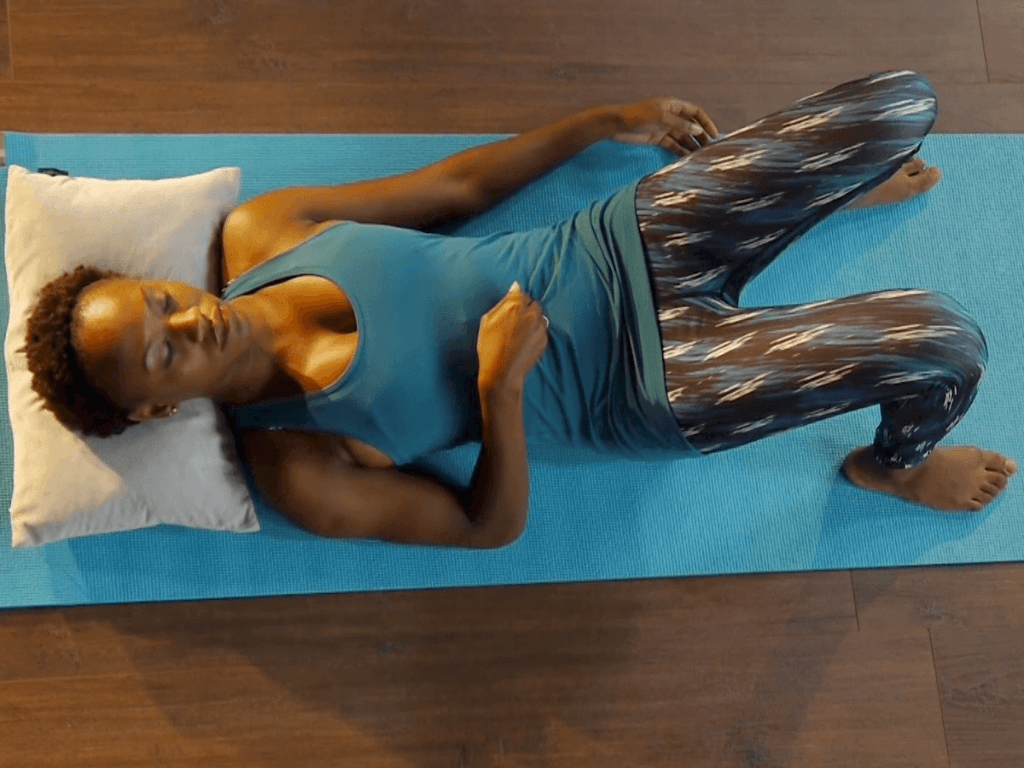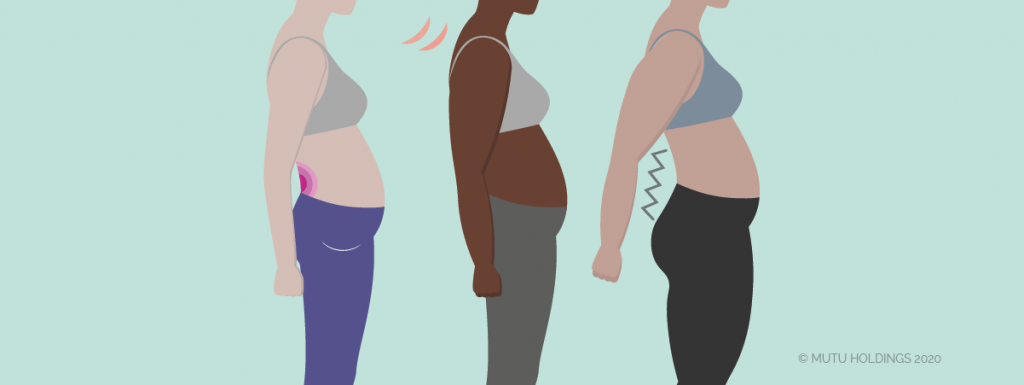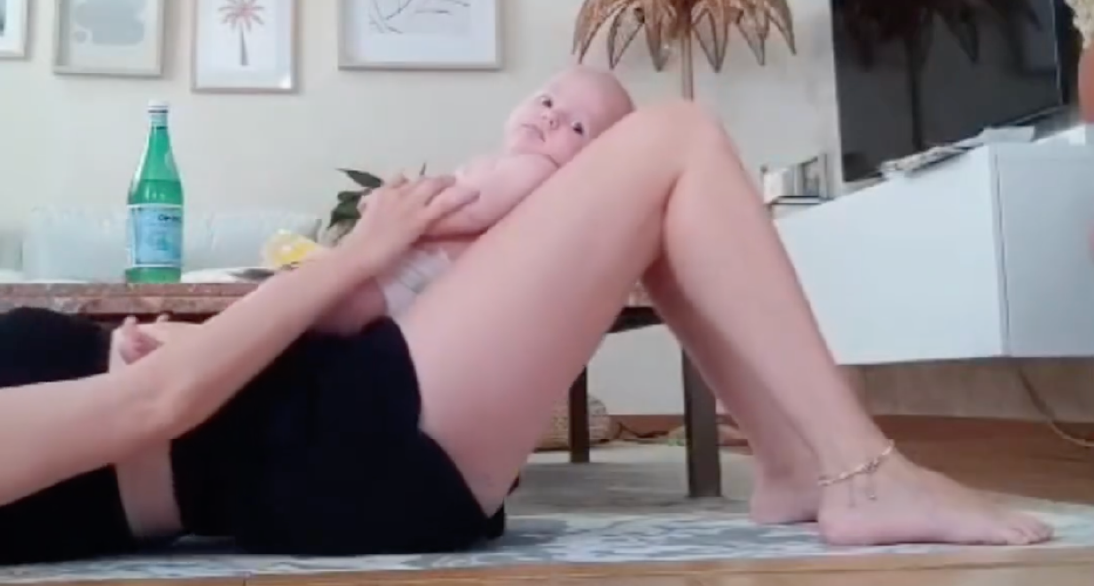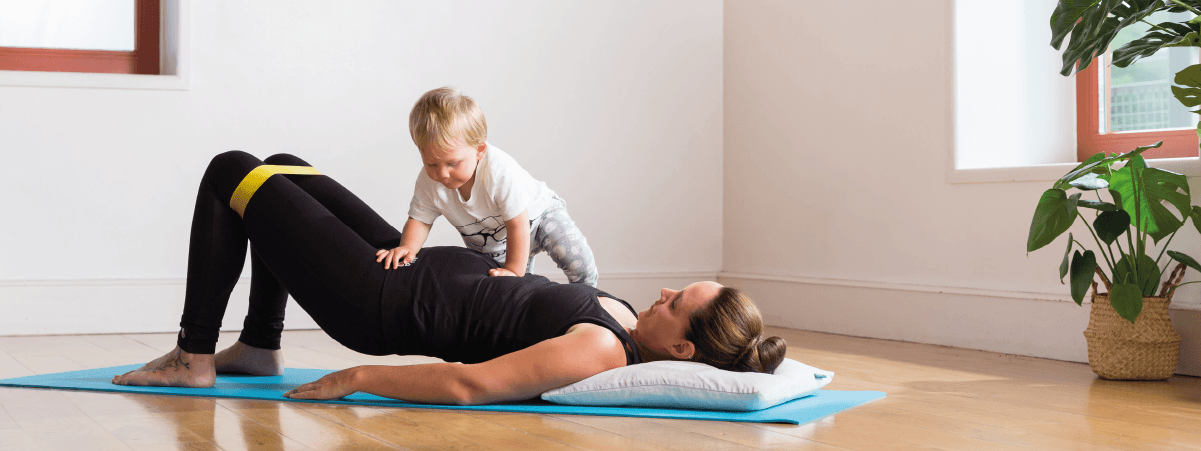Understanding the post-pregnancy tummy appearance
This question comes up a lot for mums, and not just in the postnatal period. A pregnant looking stomach 9 months + or years postpartum is not uncommon.
We are so used to seeing women in the media ‘bounce back’ quickly after having babies, constant messaging telling us that we should “look” a certain way post-baby, which can make it even more frustrating or confusing when we don’t.
You might be sick of people asking when you’re due, long after you’ve had your baby. You may have a condition called diastasis recti. But there could also be other reasons why you may have a pregnant looking stomach long after having your baby.
Reasons Your Tummy Still Looks Pregnant
If your tummy still looks pregnant, many months or even years after you’ve had your babies, this could be due to diastasis recti (abdominal separation). A diastasis may cause your stomach to ‘dome’ or bulge, especially during certain movements like getting up from lying on your back. But other factors could also be causing it.
This can be more confusing if the rest of your body is relatively lean or slim. Or if you’ve been working out and the rest of your body seems to be responding and changing, but not your abs. Sometimes it gets worse throughout the day. Or you’re simply fed up being asked when the baby’s due.
Overview of potential causes
The reality is there are loads of reasons (and usually some assortment of several) why your postpartum tummy looks and feels different. Let’s take a look at some of the most common.
Diastasis Recti
TL;DR? Diastasis recti can leave your abs and core unsupported with a ‘gap’ at the front of your tummy. As a result your stomach and the organs of your abdominal cavity can protrude or bulge, giving the appearance of a pregnant belly.
What is diastasis recti and its impact on the abdominal appearance
Diastasis recti is the widening of the gap between the two sides of the Rectus Abdominus muscle. The abdominal separation/split occurs at the Linea Alba, which is the midline collagen structure of connective tissue at the front of your abdominal wall.
It is totally normal, very common and not ‘an injury’. You can have a perfectly functional core and still have a small gap at your linea alba.
Diastasis recti can leave your abs and core unsupported with a ‘gap’ at the front of your tummy. As a result your stomach and the organs of your abdominal cavity can protrude or bulge, giving the appearance of a pregnant belly.
You can find out more about diastasis recti, or abdominal separation here. What causes it, how to recognise or test for it, and how to exercise to minimise it.
Recognizing and testing for diastasis recti

There’s an easy at-home test for determining if you have Diastasis Recti.
In the first few weeks of postpartum, you can do this test regularly to track how well your muscles are moving back together. If they stay separated past week eight, you have diastasis recti.
When checking for symptoms you are assessing not only the width of the gap, but also its depth. This may feel a bit like testing for your belly’s level of squidgy-ness. The amount of separation on both counts will determine the severity of your DR, and what you can do to help close your abdominal separation (even in these severe cases).
Addressing the root cause and not just the symptoms
It’s important to know that diastasis recti is a sign, a symptom, of a core that needs a little help to be strong and functional. Binding or wrapping your abs won’t fix it, so be sure to address the cause and not just squish your poor tummy!
It’s caused by pressure (see ‘Alignment’ below) and can be remedied with adjustments to your posture as well as the right exercises.
Nutrition, Food, and Bloating
The role of diet in abdominal bloating
If your belly seems to get bigger throughout the day, or if you feel bloated or uncomfortable after eating your diet could be the root cause.
Common culprits: sugar, wheat, and dairy
Excess sugar in your diet, and/or you could have developed an intolerance to certain foods such as wheat and/or dairy.
All of these can potentially cause swelling and bloating, as undigested food in your intestine is literally ‘pushing’ your stomach outwards. If you have a diastasis, the lack of support at the front of your abs will make this bulge more.
Dietary recommendations for reducing bloating
Cut out processed foods, including sugar, and try cutting out wheat and dairy as well for a few weeks. None of these foods are necessary for a healthy diet so you won’t come to any harm by removing them for a while! And try to monitor when it feels worse.

Drink plenty of water and herbal teas to encourage digestion and eat fibre in the form of whole fruits and vegetables, high quality protein with every meal and limited carbs, such as wholegrain rice, quinoa, rye, oats and spelt (Note: the last 3 grains on this list contain gluten… you may be intolerant to all gluten-containing foods, so if the problems persist, you may need to go totally gluten-free).
But sugar is the place to start… it may well be all you need to cut out, to see a dramatic difference and to make you feel a whole lot more comfortable.
Alignment
The importance of body posture and alignment
Your tummy may still look pregnant due to your body posture and alignment. This means the way you hold and carry your body when you walk, stand and sit.
How pregnancy and mothering affect alignment

The posture of pregnancy and mothering can place excessive pressure on the muscles at the front of your abdomen. The downward pressure on your pelvic floor, is also increased. If alignment is ‘off’, this causes undue pressure and can contribute to diastasis, pelvic floor problems or even prolapse.
The link between alignment, diastasis recti, and pelvic floor issues
There is pressure inside your abdomen and pelvis called ‘intra abdominal pressure’.
It is natural, functional and desirable, and it is your core’s job to contain it, stabilising your core and your whole body. If there are ‘kinks’ in the system, just like kinks in your garden hose, they cause the pressure to build up. This compromises smooth flow within the pipe, or the ability of your body to bear itself or any further load.
Obviously your body adapts and moves all the time, there isn’t one static ‘ideal position’. But if the kinks are there the whole time (butt tucked under / stomach sucked in / ribs thrust out)… then we have a pressure problem.
Go here for more a more indepth look at diastasis recti and alignment, and what you can do about it
Hormonal Changes
Post-pregnancy hormonal shifts and their impact
Your hormonal changes after having a baby can have a huge effect on your body, including the abdominal area. The natural hormones the body produces during pregnancy do some amazing things, like helping to relax the uterine muscles and other connective tissues (including your ab muscles!). This is essential for accommodating your growing uterus but can also sometimes contribute to the separation of the abdominal muscles, leading to diastasis recti.
Pregnancy Weight Gain and Your Postpartum Abdomen
The role of weight gain and loss post-pregnancy
As you gain weight during pregnancy, especially around the abdominal area, there is an increase in intra-abdominal pressure. This pressure can contribute to the stretching and separation of the abdominal muscles, leading to diastasis recti postpartum.
Overstretching of Connective Tissues
This extra weight gain can also put additional stress on the connective tissues that hold the abdominal muscles together. The connective tissues, including the linea alba (the band of tissue between the rectus abdominis muscles), may become overstretched, contributing to the separation of the muscles.
Risk of Larger Separation
Women who gain a higher than average amount of weight during pregnancy may be at increased risk of developing a larger separation of the abdominal muscles. A larger separation can be associated with more noticeable symptoms and may take longer to resolve postpartum.

Tips for managing weight loss postpartum
Firstly, it’s important to focus on overall well-being rather than just the number on the scale. Be patient with yourself and set realistic goals. Consider proper nutrition, exercise, rest, stress management, and emotional well-being as key components of a postpartum weight loss strategy.
Diet and nutrition tips for postpartum weight loss
- Focus on a healthy diet consisting of nutrient-dense foods that provide essential vitamins and minerals.
- Stay adequately hydrated by drinking water throughout the day.
- Aim for balanced meals and a healthy snack that include a variety of food groups (put together a diet plan if you think it helps you to plan ahead)
- Avoid ultra processed food as much as possible, sticking to natural ingredients without additives and/or preservatives.
- Unless advised by a care provider, avoid restrictive diets or cutting out entire food groups. A lack of sufficient calories in the postpartum period may compromise nutrient intake and milk supply if breastfeeding.
For more in-depth resources on weight loss head to our dedicated section.
The Right Exercises for a Tummy That Still Looks Pregnant
It is said that how our muscles look when we exercise, is how we’re exercising our muscles to look.
When you perform ab workouts, or any workout, does your tummy seems to push or strain, or you feel any kind of pressure or bearing down in your pelvis?

If so it is possible you are training your muscles in a way that increases, not decreases the pressure pushing outwards.
Safe exercises for diastasis recti and abdominal bulging
In terms of healing diastasis recti, beyond just wanting to tighten up that dreaded “mommy belly,” it’s about restoring core movement for daily function.
Because of this, functional movement itself when done correctly can be a big part of closing your diastasis recti.
The seven human functional movements are:
- Squat
- Bend
- Lunge
- Core
- Push
- Pull
- Cyclical
Some examples of getting in functional movement are: walking, squatting, glute bridges, hip circles, and arm swings. For 5 of our favourite exercises for diastasis recti see here.
The impact of incorrect exercises on abdominal pressure
Some exercises done incorrectly can actually increase abdominal pressure.
Exercises like standard crunches, sit-ups and planks are typically not recommended with diastasis recti, but that’s not a hard and fast rule.
That recommendation is because rather than strengthening your core, doing these exercises with your abdominal split without properly engaging your core will just increase intra-abdominal pressure.
That can cause the pressure from within to push your organs outwards, against or through the gap, and/or downwards onto your pelvic floor. Not really where you want your organs forcefully heading!
So before you just start crunching away, you’ll need to reestablish function again with foundational exercises.
And always listen to your body before, during, and after introducing ab exercises into your postpartum or pregnancy fitness routine. More on safe exercises for diastasis recti here.
When to See a Doctor
A bloated, painful and swollen abdomen CAN be a sign of something very serious like ovarian cancer – this is not intended to scare you, but simply to say that there’s no harm in getting checked out if you’re really concerned. The above are much more likely causes.













It has been 11 months since I gave birth to my child, and through out this time, stress, anxiety, and trauma have been at an all-time high. I started pelvic floor therapy after switching to a more caring and loving OBGYN. Additionally, I have been dealing with diastasis recti, resulting in a larger separation of my abdominal muscles. I am learning how to regain control of my life. Though it has been a struggle, I am grateful to my therapist for introducing me to this wonderful site and a community of other women experiencing similar symptoms and issues.
Thank you Sade, we’re so happy for your results!
I am gluten and dairy free, lost 7kg because of it. I do cardio, and core strengthening exercises recommend by women’s physio. And I have been cleared for disasters recti and do my pelvic floors and gets chiropractic adjustments.. Now what else could I possibly do?? And have had recent all over bloods that have come back clear!
My bloating increased after going paleo. Argh and to think I thought eating healthier was gonna get me in the best shape ofmy life. I look bigger than ever. Cutting fruit helped but I really don’t believe in cutting out food groups anymore.
My bloating increased after going paleo. Argh and to think I thought eating healthier was gonna get me in the best shape ofmy life. I look bigger than ever. Cutting fruit helped but I really don’t believe in cutting out food groups anymore.
If I bend backwards my stomach sticks out massively in the centre only exactly where my stomach sits inside my body. Is this from weak muscles?
If I bend backwards my stomach sticks out massively in the centre only exactly where my stomach sits inside my body. Is this from weak muscles?
Me too
Me too